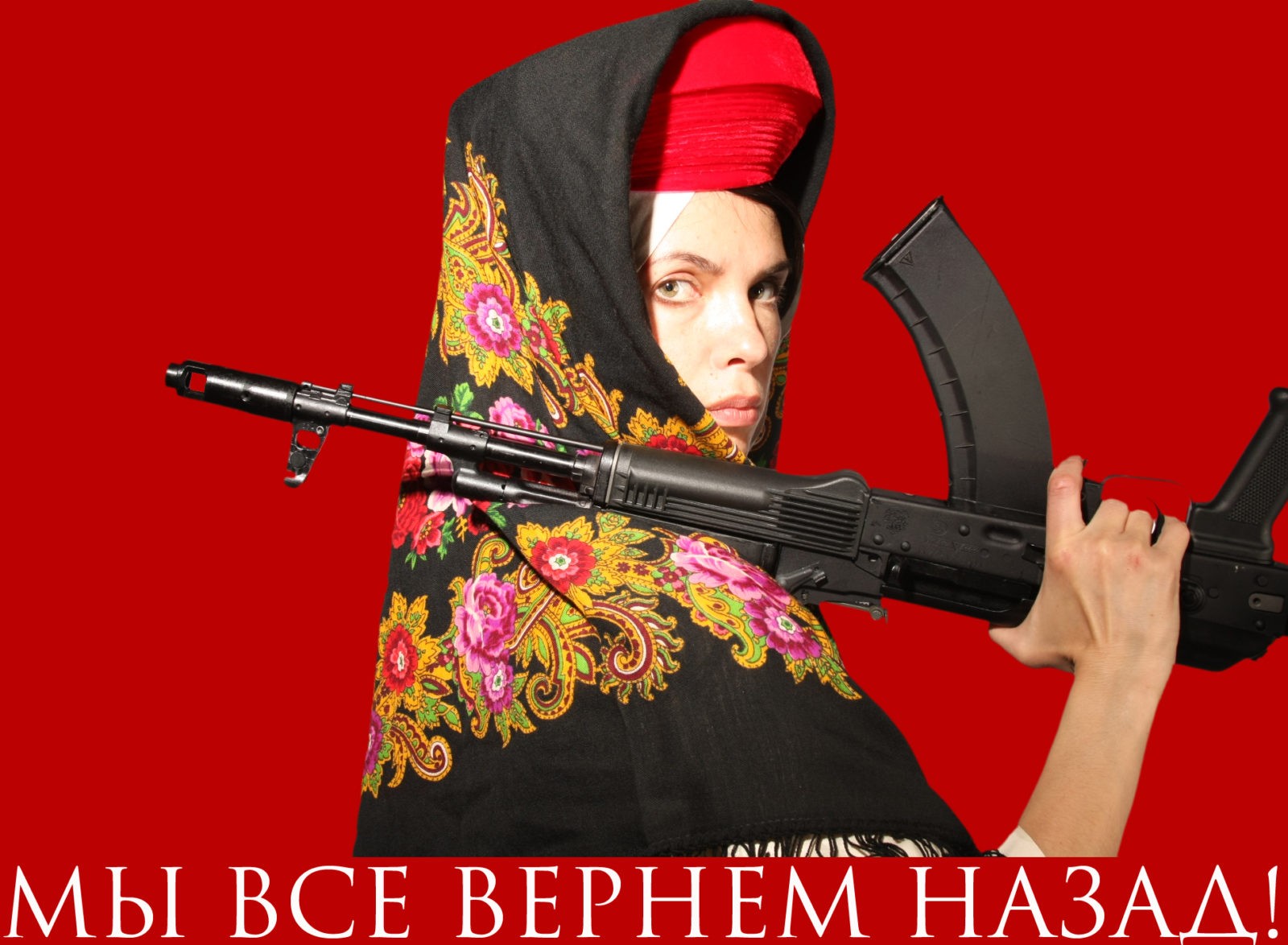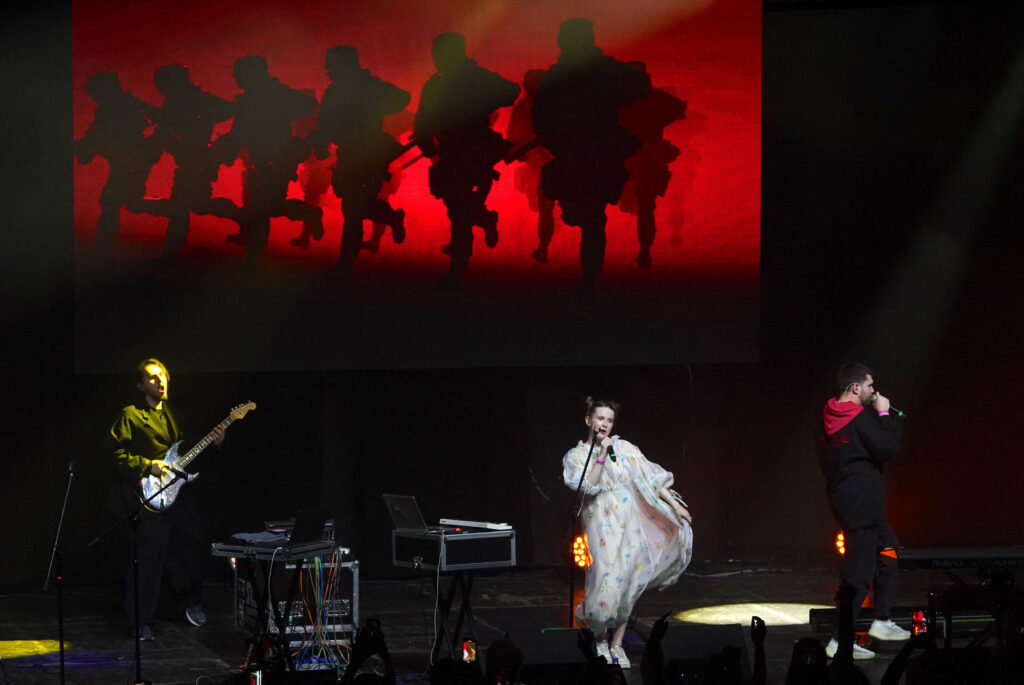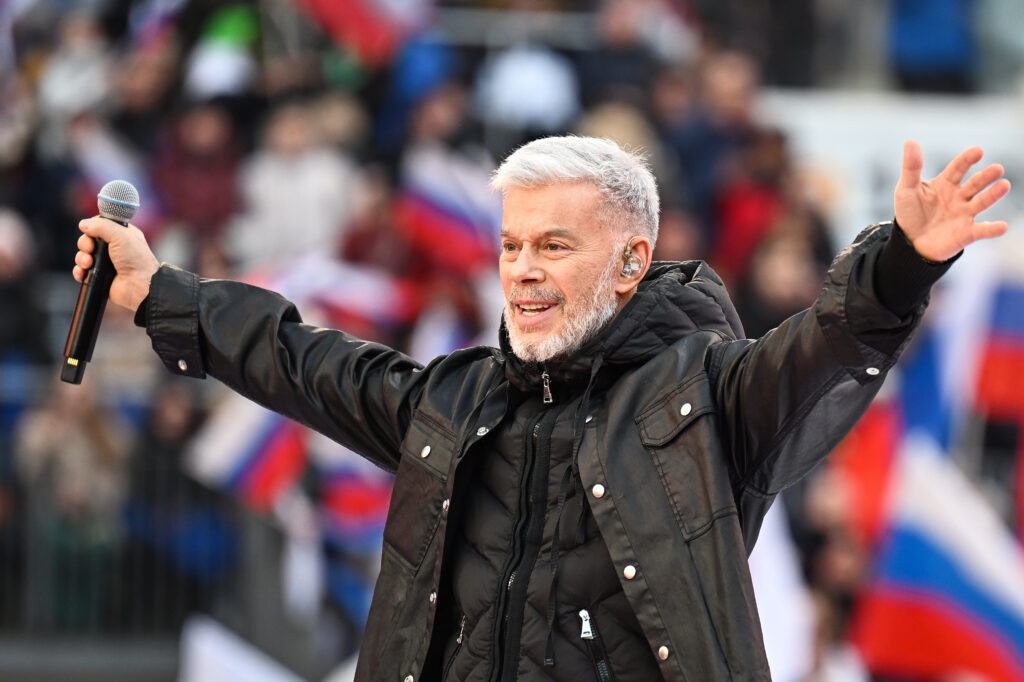Personifications of Russia have a long history in Russian visual culture, philosophy and literature. During the Silver Age, Russia was associated with a bride, while in the Soviet period, the image of the Motherland became dominant. The Russian tradition is marked by a great significance attached to the cult of the Theotokos [Dei Genetrix, Bogoroditsa], which unites the images of a young virgin, of mother, and of protectress. The Theotokos who assists in warfare is a persistent element of the Russian cultural memory. The statuary images of goddesses/holy warriors, the likes of Pallas Athena and Joan of Arc, as well as allegorical images of countries as maiden warriors were popular in the nationalist and patriotic European art of the 18th and 19th century and the mass propaganda art under the First World War. The image of Homeland as a woman-warrior is characteristic of pre-war periods due to its significant mobilization potential.
Daughterland and culture
In 2007, the most prominent neo-conservative Russian artist Alexei Beliaev-Gintovt reintroduced this tradition and presented a new image of Russia as daughter in his project Patria Filia. Daughterland. The image of Daughterland is symbolized in this project by the fragment of the famous sculpture «Worker and Kolkhoz Woman» by Vera Mukhina (1937). In 2008 for this project, and for his «Brothers and Sisters» work, Beliaev-Gintovt won the Kandinsky prize, the most prestigious prize in Russia for contemporary art.
In the Patria-Filia project Beliaev-Gintovt develops Nikolai Fedorov’s (1829−1903) esoteric idea of «father-loving» daughters, presented in his Philosophy of Common Cause (1906−1913). In this book, Fedorov divides all women into two types: «ordinary» women, who love their offspring, and the superior and much smaller group whose virtue is «love for fathers.» This second and, according to Fedorov, superior group of «daughters» have the special task in the future project of resurrection of ancestors.
In 2008, during the Russia-Georgia war, Beliaev-Gintovt created a new genre of mobilization posters, which he named «eschatological posters» [eschat-plakat]. He visualized future Russia in the image of a beautiful young Valkyrie/Shieldmaiden/Dominatrix in a traditional Russian shawl, who is ready for battle, armed with a hybrid golden axe or Kalashnikov automatic rifle.
The neoconservative visual metaphor of Daughterland [Rodina-Doch’] has yet to take root in official rhetoric though it is already sufficiently present in contemporary Russian art and popular culture. The modern images of Daughterland find themselves in the ambiguous zone, somewhere between patriotism and incest, feminism and male fantasy, nostalgia and futurism.
The short period of Perestroika was the time of youth. Young females as objects of desire dominated the visual culture and cinema of that period, e.g. first Soviet beauty pageants or cult films as Assa (1987), Malenkaya Vera(1988), and Interdevochka (1989). The image of the young, beautiful girl symbolized the sexual revolution and the liberation from Soviet puritanism, patriotism and official bureaucracy. However, a new interpretation, bringing us closer to the Daughterland concept, which refers not just to the future but also the past, was born as early as the beginning of the 2000s. The metaphor of Russia as a teen girl is present in the film «Sisters» (2001) directed by Sergei Bodrov Jr. The film demonstrates, for the first time in the post-Soviet period, a reconstruction of romantic heroism, typical both for the official Soviet culture and the wild 90s. The main heroine of «Sisters», the elder sister Sveta played by Oksana Akinshina, is a 13 years old girl from a provincial Russian town, a brave «girl with a gun», who wants to be a sniper in the Russian Army and to fight in Chechnya. Sveta protects not just her younger half-sister Dina but in her name stands up to defend the future Russia-Eurasia from evil, personified in the movie by the local mob. Thus, she becomes one of the first embodiments of Daughterland, and marks the return of both the Soviet interpretation of an archaic «young victim» plot and the Soviet «child heroism».

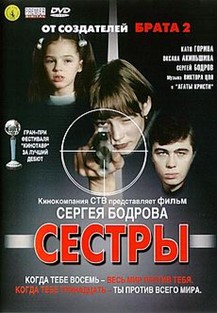
Sergei Bodrov, Jr., Sisters, 2001
Another interesting example of the Daughterland discourse in contemporary Russian popular culture is the latest cover of Viktor Tsoy’ famous song Cuckoo/Kukushka from 1990, performed by a 12-years old Dasha Volosevich (2015). Earlier covers of this song were performed also by young female singers: Zemfira made her cover in 2000, and Polina Gagarina in 2015. Gagarina’s version of Cuckoo was a soundtrack for the blockbuster «Battle of Sevastopol» (2015), which tells the story of a Soviet maiden who turns out to be a natural-born sniper. Here we see a reference to Bodrov’s Sisters — not only because both girls are snipers, but also because Viktor Tsoy’s Cuckoowas the Sisters‘soundtrack. «Battle of Sevastopol» demonstrated the commercial potential of the idea of Russia as a maiden warrior.
The special twist of Dasha Volosevich’s performance in this video is the fusion of childish innocence, aggressive militarisation, and a willingness/readiness for the future sacrifice. To date, the video has been viewed almost 7 million times, which demonstrates the demand and commercial value of the Daughterland concept. The context of war and/or army is even more explicitly presented in the Internet posters.


Dasha Volosevich, Still from Cuckoo, 2015
The commercialization and popularization of the image «the young girl and the war» in the patriotic segment of pop-culture culminated in 2016: the latest cover of Viktor Tsoi’s song Cuckoo performed by 7 years old Iaroslava Degtiareva on the show Golos-Deti in February 2016 has been viewed more than 17 million times on YouTube. The press release of the song tells us that the girl chose the song herself after viewing the film The Battle of Sevastopol.
Daughterland and politics
A recent case which demonstrated the topicality of Daughterland discourse for official propaganda and mass culture was Natalia Poklonskaya, the Russian installed Prosecutor General of Crimea, who became a symbol of the Russian Spring. In the famous video clip «Nyash-Myash» by Enjoykin from March 2014 (26 million views on YouTube), she became a «cute» superhero in military uniform. Segments of the video shot in anime style presented the 34-year-old Poklonskaya as a girl with a sword, fighting metaphysical evil.

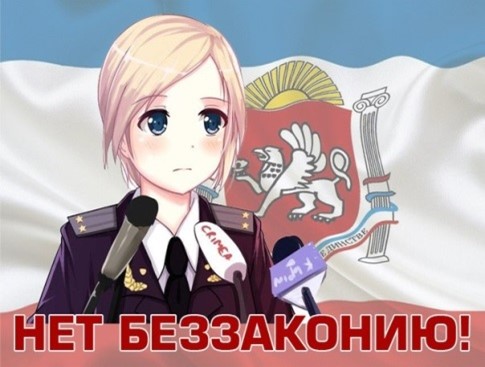
Natalia Poklonskaia as Nyash-Protectress, a shield against Anomia [bezzakonie]
Poklonskaya’s archetypical characteristics and her media and pop-cultural potential is determined by her position as an enforcement officer and also by her similarity with the character from the film The Silence of the Lambs played by Jody Foster, the FBI agent Clarice Starling, who also single-handedly emerges victorious against absolute evil. The images of Daughterland have an explicit mythological subtext both in popular culture and in neo-conservative discourse: a young beautiful damsel endures wrongs and tortures of evil, often personified by some old witch and/or her stepmother. For example, Poklonskaya as a symbol of Crimea and «real people’s democracy» is contrasted with Yulia Timoshenko as a symbol of the new Ukrainian oligarchic regime («the Junta»). There are a lot of anti-Ukrainian memes and demotivators on the Internet with allusions to Snow-white. Interestingly, in neo-conservative discourse, just like in folklore, beauty becomes a symbol of «civilizational» truth. Poklonskaya’s youth and beauty are contrasted with the old ugly body of the bureaucratic Europe. This image is embodied in a popular meme in which Poklonskaya, representing Russia, is drawn as an anime character, and Europe (and the West in a broader context) is presented by an unflattering photo of the former High Representative of the Union for Foreign Affairs and Security Policy Catherine Ashton. In these memes the face of Poklonskaya is unmoved in its chastity, whereas the faces of the «enemies» are distorted by grimaces.
The image of Daughterland in neoconservative discourse is also embodied in Russian sports beauties. Sports and military/political victories have been closely connected since Soviet times, but only in 2014 did this connection re-emerge full blown when Russia’s Sochi Olympics victories coincided with the annexation of Crimea, and then in 2016 again due to the ban of some of Russian sportsmen, including Elena Isinbaeva for the Rio Olympic games. One can also point to symbolic images of figure skater Yulia Lipnitskaya and fencer Sofiya Velikaya that had Beliaev-Gintovt and Sankt-Petersburg art group Doping-Pong attributed their work to. For example, the artists of Doping-Pong in their work «Velikaya» employ a word play with the last name of the fencer (Velikaya translates as Great) and abbreviation Rus that all the sportsmen had on their uniform during the games. The result is a fresh, modern and unexpected interpretation of «Velikaya Rus translates as Ruthenia magna».

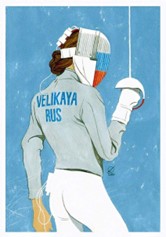
Doping-Pong, Great [Velikaya], 2015
The political potential of Daughterland was fully tried for the first time during this summer’s Duma 2016 campaign. A distinctive feature of this State Duma election is a great number of young women candidates. Among them are media celebrities Natalia Poklonskaya and Maria Katasonova, activist Maria Baronova and Ksenia Sokolova.
Sexualization and anesthetization of political protest was a trait of marginal nonconformist movements of the 1990s (Limonov’s National-Bolshevik Party and Dugin), but today this subtext moves to official culture and politics. Feeling the vibes of the time, Eduard Limonov published an article in August of 2016 «Only broads are going to battle», where he noted an unexpected influx of qualified and attractive women to Russian politics.
The images and meanings of romantic and sexual patriotism formulated by Russian neoconservative subculture in the beginning of the 2000s are being filled with political meanings today. This new phenomenon of erotic patriotism clearly goes beyond Putin’s alpha — male cult that characterized his second presidential term, and reflects deeply-rooted archaic symbolism of a young sacrifice for the «common cause». As for Putin — he definitively solidifies as the «father» of a young and sexy nation.
